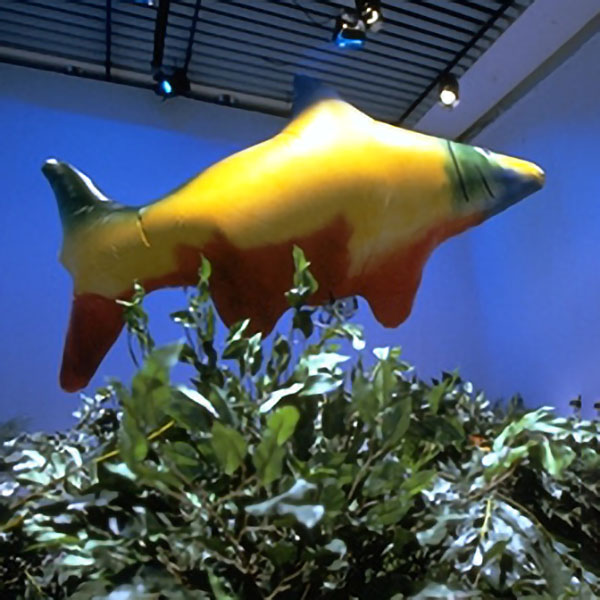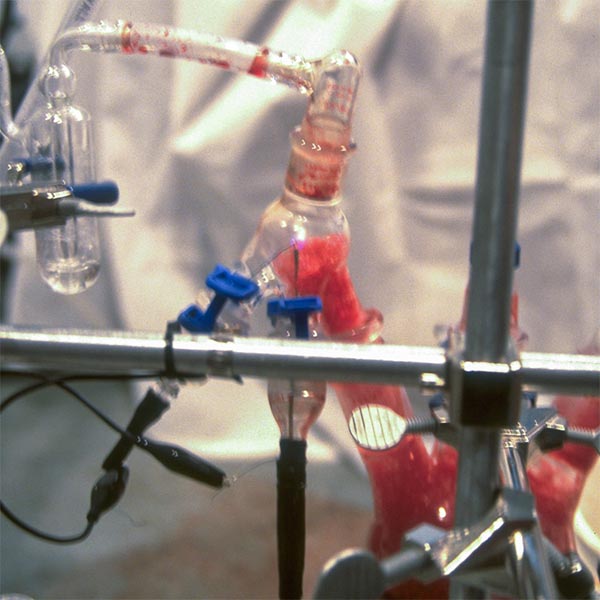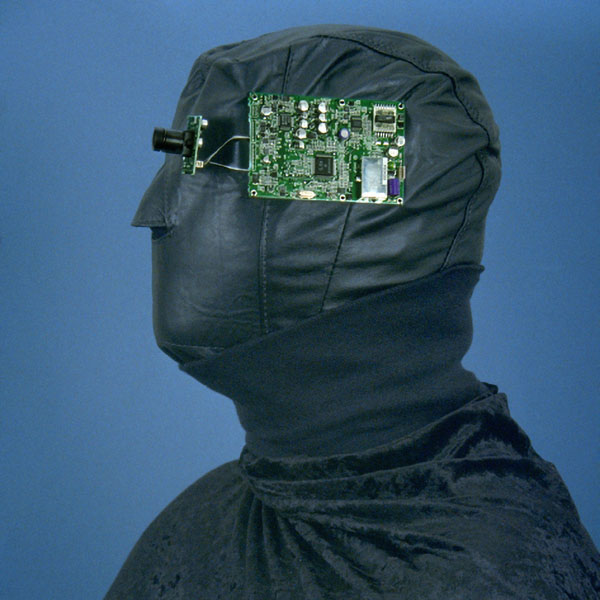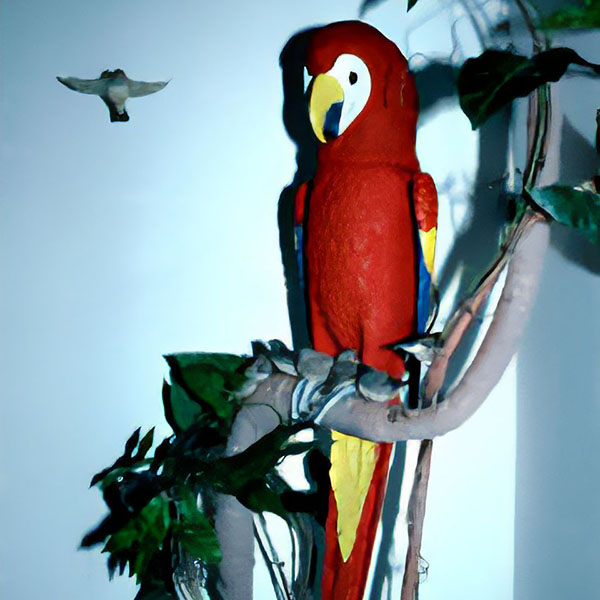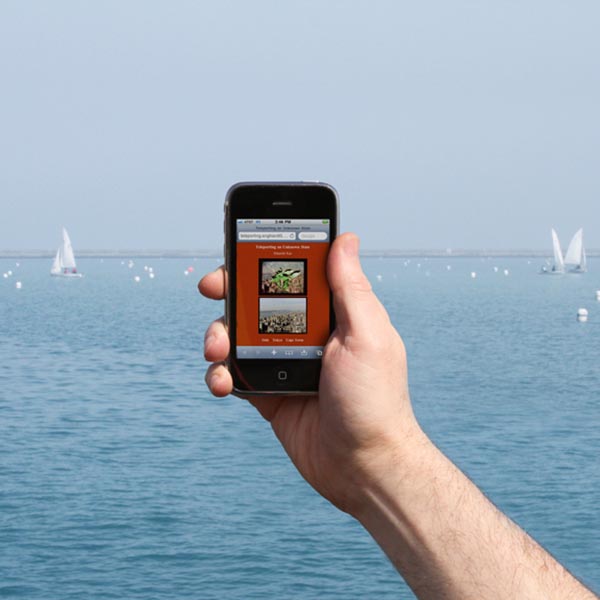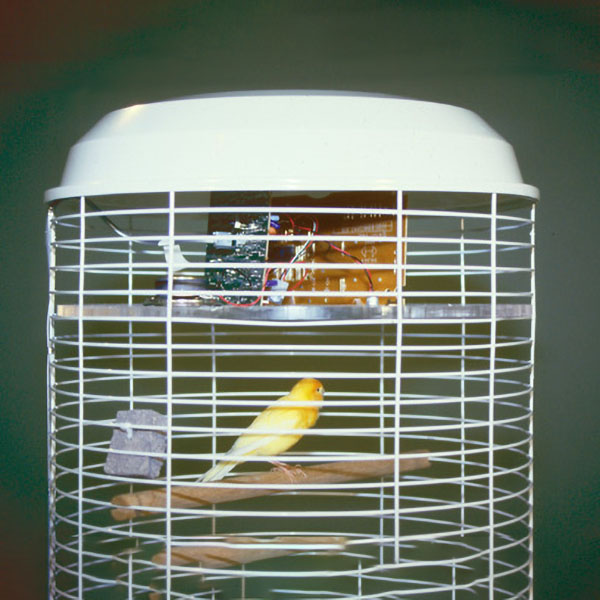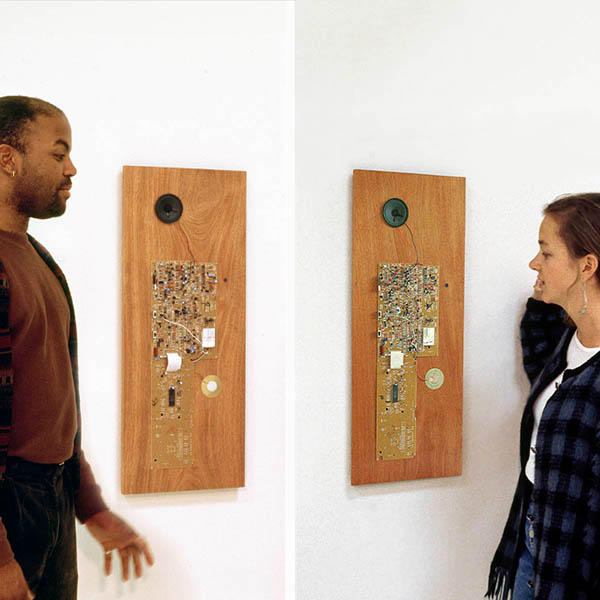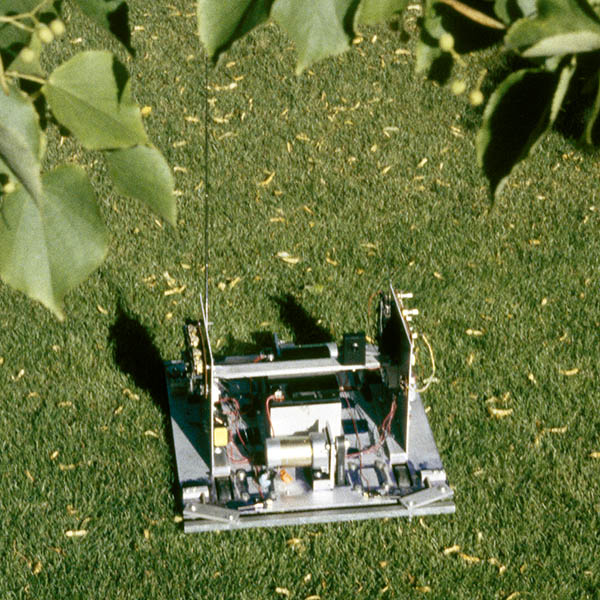Uirapuru
1996/99
A flying fish hovers above a forest in the gallery, responding to local as well as Web-based commands. Audio and video from its point of view are streamed on the Web. Local and remote participants interact with the avatar of the flying fish in a virtual world. When this happens the flying fish sings in the gallery. Pingbirds (robotic birds) sing Amazonian bird songs in the gallery in response to the rhythm of Internet traffic. Pingbirds monitor the rhythm of the Internet by sending ping commands to a server in the Amazon. This work unites telepresence, multi-user virtual reality, and networking into a single realm of experience.
Edition of 2 + AP
